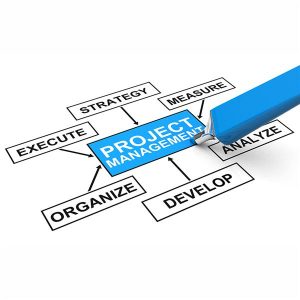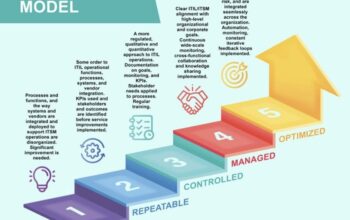Practical and effective project management has its roots in SIMPLICITY. Keeping a thing simple makes it easier to understand for most stakeholders e.g. project stakeholders can provide requirements in simple terms – teams unambiguously, they can set clear expectations. Project stakeholders can measure project success in terms of benefits it delivers.
Step 1 : The Groundwork – First Do Your Homework
Before project manager (PM) or portfolio manager can jump on to project planning, you as a PM should be doing certain ground work. As mentioned earlier you should identify:
Who are the project stakeholders, who are going to be beneficiaries?
What are the outcome-benefits expected by various stakeholders?
Based on these benefits, how you can garner buy-in from senior management or customers?
High level of deliverable, skill set required to deliver those
Identify metrics: project management KPI to define project success
How project artifacts, progress, issues, deliverable will be communication i.e. communication plan
Let’s look at these six basic steps for effective project management: project planning and project execution that a project manager can follow in almost every project to ensure project is delivered successfully.
Step 2: Clarity of project requirements, project scope
In most cases, unclear project requirement definitely results in project failure. Right at the beginning ensure all relevant stakeholders understand project requirements clearly and the importance of having unambiguous project scope. It is pretty common these days to see that sales team, project managers working with clients and help him articulate client’s requirements. Based on very high level project requirement, you can chalk out project charter, project scope.
If you would like to avoid project scope creep, you will have to make stakeholders understand that project scope is sacrosanct. Having said that total inflexibility can also kill project outcome (i.e. project outcome will not be useful or beneficial to customer as expected). You can accommodate change request after reviewing its value to project outcome.
It is crucial for effective project management to be able to have complete and clear project requirement, right at the beginning and avoid project scope creep during project execution. You can use right project management tools to draft, articulate project requirements, review and seek approvals, so that transparency and accountability for project requirement is ensured.
Step 3: Planning schedule, risks, resources
Team Selection
Once a project charter and project scope is defined and articulated, you will have to identify project manager and project planners. Having project manager, project planner and team members who are subject matter expert for a project in consideration wins half-battle. As project manager & project planners define work-breakdown-structure (wbs) and identify high level deliverable, identifying right skillset to work on those deliverable is equally important. So based on these identified skillset, project manager has to select resources who will be allocated to project and will be assigned work.
Project Schedule
The planning phase of project requires well defined project charter and project scope. Based on this project manager can work on project schedule identifying important deliverable, WBS, milestones. As he gets better understanding of project scope, available resources, he can create detailed project schedule identifying minute level details of project schedule : i.e. tasks, milestones, subtasks, allocating and assigning resources to each of these tasks. As we know, detailing leads to questions, questions brings clarity, and clarity drives predictability.
This phase marks a clear assignment, responsibility for project team members. Again it is important to have detailed plan for effective project management. And equally important it is, to be able to track the project
Planning for Project Risks
Managing project risks is integral part of project management. If your projects are not trivial, whether you like it or not -risk will be inevitable part of your projects. If it is not done as an academic exercise of managing project risks, project risk management saves you greatly from surprises. It is important for effective project management to plan for project risks right at the beginning. You need to make team members aware of project risks also provide a platform like online risk register where team members and other stakeholders can quickly record & highlight project risks.
Step 4. Communication Plan – Clarity & Frequency
At every phase and step of managing project, project manager has to communicate. Communication strategy and plan is crucial for greater project visibility and ultimately for project success. Project communication is required for:
- Informing stakeholder about project plan, scope; review and approvals thereof,
- Keeping team members informed about change in project schedule,
- Being able to highlight issues and risks in project,
- Being able to provide clear & real better visibility to sponsors, portfolio/executive managers with project portfolio KPIs
- To get buy-in or support from senior management if anything is going wrong,
Step 5. Monitor & Control
As the project is kicked-off and project team has started working on project deliverable, as project manager you need to track project progress, communicate it to senior project managers, customers as appropriate. In order to monitor and control project
- You will have to collect progress updates, and check project is not going off-the-track
- Adhere to the project schedule, cost and keep watching project baseline
- Follow the mantra Get Things done, no matter what are obstacles
- Check project deliverable for quality
- Involve project sponsors, customers and end-users informed
- Take a regular feedback from team, customers and end users
- Manage change requests, issues and risks judiciously; as these are inevitable but if not managed well can take project off the track
Step 6. Deliver, close and Review
When you will deliver project artifacts, meet milestone ; you would like your project customers to see the benefits. You would like customer to actually make use of it. Hence you will have to see
- Project deliverable are working for customer
- Address any issue, gaps
- Work with customer to identify trainer or champion
- Train the trainer
- Run a pilot, make it successful and enable customer to market it inside and outside customer’s organization
To get customer confirm successful project deliverable, you can schedule a pre-planned review meeting to get a formal agreement, seek feedback, identify positives and negatives of the whole exercise of delivering projects – project review. Thereafter, you should also conduct an internal review of the project to identify mistakes made, learning thereof and best way to move forward.



